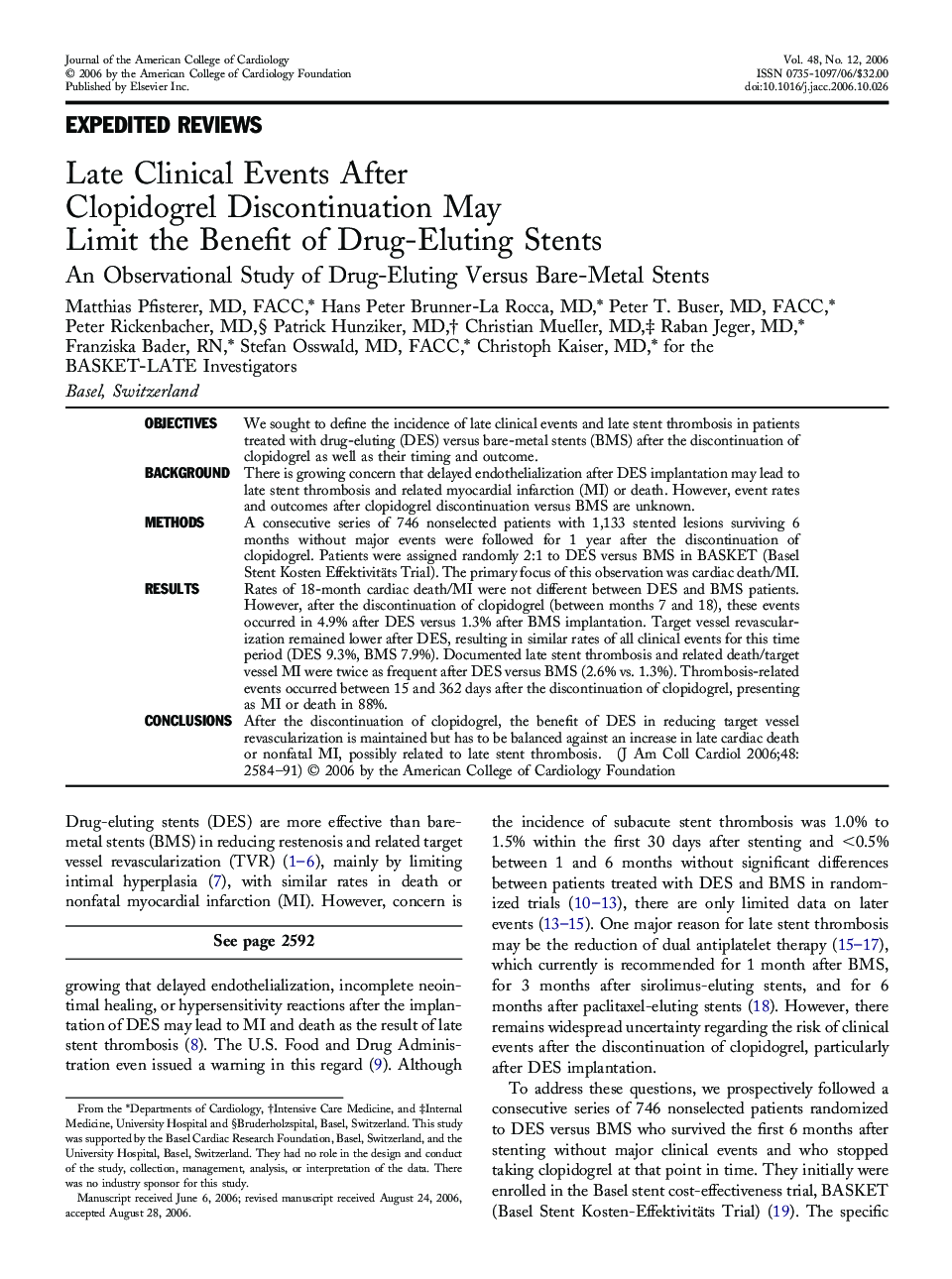| Article ID | Journal | Published Year | Pages | File Type |
|---|---|---|---|---|
| 2951840 | Journal of the American College of Cardiology | 2006 | 8 Pages |
ObjectivesWe sought to define the incidence of late clinical events and late stent thrombosis in patients treated with drug-eluting (DES) versus bare-metal stents (BMS) after the discontinuation of clopidogrel as well as their timing and outcome.BackgroundThere is growing concern that delayed endothelialization after DES implantation may lead to late stent thrombosis and related myocardial infarction (MI) or death. However, event rates and outcomes after clopidogrel discontinuation versus BMS are unknown.MethodsA consecutive series of 746 nonselected patients with 1,133 stented lesions surviving 6 months without major events were followed for 1 year after the discontinuation of clopidogrel. Patients were assigned randomly 2:1 to DES versus BMS in BASKET (Basel Stent Kosten Effektivitäts Trial). The primary focus of this observation was cardiac death/MI.ResultsRates of 18-month cardiac death/MI were not different between DES and BMS patients. However, after the discontinuation of clopidogrel (between months 7 and 18), these events occurred in 4.9% after DES versus 1.3% after BMS implantation. Target vessel revascularization remained lower after DES, resulting in similar rates of all clinical events for this time period (DES 9.3%, BMS 7.9%). Documented late stent thrombosis and related death/target vessel MI were twice as frequent after DES versus BMS (2.6% vs. 1.3%). Thrombosis-related events occurred between 15 and 362 days after the discontinuation of clopidogrel, presenting as MI or death in 88%.ConclusionsAfter the discontinuation of clopidogrel, the benefit of DES in reducing target vessel revascularization is maintained but has to be balanced against an increase in late cardiac death or nonfatal MI, possibly related to late stent thrombosis.
